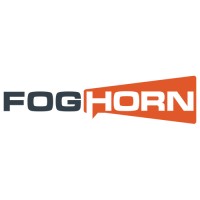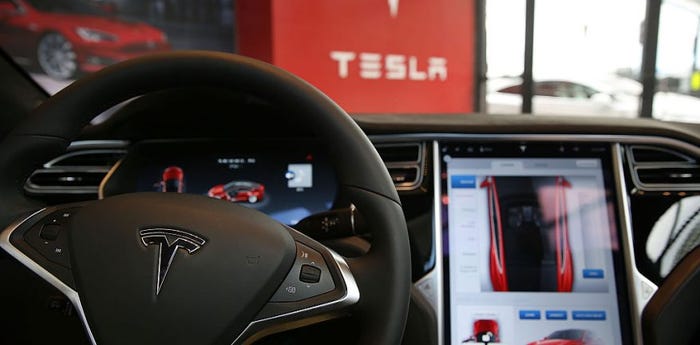Artificial Intelligence Is Unshackling DHL's Supply Chain Potential
DHL Supply Chain's CIO explains how AI and IoT are changing the game for his company, its partners, and its competitors.
April 18, 2017

When you think of cutting-edge technology, logistics likely doesn’t immediately spring to mind. But sweeping changes are coming to the supply chain, says Paul Richardson, chief innovation officer at DHL Supply Chain and Internet of Things World Europe keynote speaker. In a recent interview, Richardson filled us in on how DHL is using Internet of Things technology and how they plan to use the technology in the future.
Could you tell us more about your role?

Richardson: I am the chief innovation officer in the UK and Ireland Supply Chain division, and have responsibility for identifying new ways to add value to our clients and to the DHL business. This involves engaging with external partners, as part of our open-innovation approach, and developing new businesses with innovative business models.
I also have a responsibility for four sectors, passenger gateway, technology, public sector, and Envirosolutions, which provides direct access to clients and accelerates the delivery of change.
Would you say there’s been a surprising lack of good industrial IoT case studies to date?
Richardson: There is certainly a high level of activity relating to Internet of Things, both in DHL itself and with our clients. However, there are a few factors that have resulted in the relative lack of industrial case studies.
Firstly, we are now approaching the tail end of Gartner’s Hype Cycle when it comes to IoT. That is, we are at a point where the news stories and hype around IoT is starting to reduce, and the delivery of IoT projects is beginning to increase.
Secondly, the nature of IoT is that many projects are bottom-up and tackle specific solutions. In contrast to more top-down trends, such as enterprise resource planning (ERP) from a few years ago, examples of IoT are more granular.
Finally, as some of the IoT projects that we are working on deliver significant competitive advantage to our clients, we need to keep confidentiality on the new ways of working.
Given the number of projects that I know are taking place, I suspect that you’ll see an increasing number of case studies coming out in 2017 and 2018. In particular, we’ll see more IoT case studies that link to machine learning.
Who will drive this surge in machine learning?
Richardson: There are a number of different providers currently contributing to the “IoT solution stack.” These providers service various aspects of a business bringing IoT solutions to areas such as sensors, communications, device management, data aggregation, security, and analysis. Such solutions need to be tailored and adapted for the requirements of different sectors, such as retail, automotive or FMCG, rather than being “one size fits all.”
We expect that the leaders in IoT will be those providers who can uncover the real business opportunities, understand the challenges of working in each sector, and who have the rigor of delivering technology enabled solutions. Given that DHL is one of these organizations, you could argue that I’m subjective on this topic! We are, however, delivering a broad range of initiatives right now and I see that trend continuing.
How will DHL apply IoT technology in the supply chains?
Richardson: IoT in supply chains opens a realm of opportunities. At its simplest, it’s about understanding where inventory is in the supply chain, particularly when it’s not in a warehouse, and what state that inventory is in, for example, its temperature.
From there, and with the use of machine learning and analytics, companies can do more granular planning, procurement, and production, and can consider how to deliver more segmented supply chain solutions. Beyond this, the ability to tag and track an item allows for more mechanization to take place in the supply chain, providing lower costs to serve and extending potential service levels.
Within ten years, we’ll see a significant proportion of the inventory in the supply chain with sensors collecting data. The winners in the space will be those that can aggregate, extend, and then analyze the data to adapt the supply chains in real time.
How does artificial intelligence fit into DHL’s future plans?
Richardson: AI will have a significant influence on the supply chain, and is already very much part of what we do. While there hasn’t been a huge amount of hype surrounding AI in supply chains, there are clear examples when you break it down into its key component parts. These include predictive analytics, scheduling and resource planning, operational efficiency, customer insight, and automation and robotics.
AI is, in essence, the combination of data collected through IoT sensors combined with machine learning. This is set to drive the most significant changes, which will fundamentally reduce costs and improve services for end customers.
What is holding back the technological development of supply chains?
Richardson: The whole process of digitalization, of which the introduction of IoT is just a part, is still at a very early stage across the industry.
The constraints are not with companies, or types of companies, but with the availability of talent that can rethink businesses with an IoT perspective, and with pragmatism and experience that can then enable the required changes to happen.
About the Author(s)
You May Also Like



.png?width=700&auto=webp&quality=80&disable=upscale)
.png?width=700&auto=webp&quality=80&disable=upscale)
.png?width=300&auto=webp&quality=80&disable=upscale)
.png?width=300&auto=webp&quality=80&disable=upscale)
.png?width=300&auto=webp&quality=80&disable=upscale)
